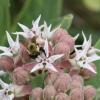 INSTITUTE FOR NATURAL RESOURCES
INSTITUTE FOR NATURAL RESOURCESYou are here
TOPICS
all

A habitat is an ecological or environmental area which supports one or more species of animal, plant or other type of organism.

Natural hazards refers to atmospheric, hydrologic, geologic, and wildfire phenomena that have the potential to affect humans, their structures, or their activities adversely.

Natural hazards refers to atmospheric, hydrologic, geologic, and wildfire phenomena that have the potential to affect humans, their structures, or their activities adversely.

Natural hazards refers to atmospheric, hydrologic, geologic, and wildfire phenomena that have the potential to affect humans, their structures, or their activities adversely.

Natural hazards refers to atmospheric, hydrologic, geologic, and wildfire phenomena that have the potential to affect humans, their structures, or their activities adversely.

Individual health and that of communities is influenced by a host of personal and contextual factors. Learn about trends and influences on health.

One of the keys to understanding changes in rural communities and their resilience is knowing about the dynamics of the influential underlying social structures.

Invertebrates, which include insects, are animals without backbones. They form the largest and most diverse, and least understood animals.

Invasive species are non-native species which spread widely on their own. Many are considered to be noxious, and cause economic or environmental harm or harm to human health.

The Oregon land use planning program is widely recognized for its pioneering efforts to preserve the principle of local responsibility for land use decisions while defining a broader public interest at the state level.

Landscape assessment reviews existing conditions for vegetation, wildlife habitat and potential hazards to prioritize where natural resource management activities may be most effective and result in desirable conditions.










